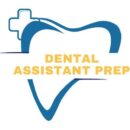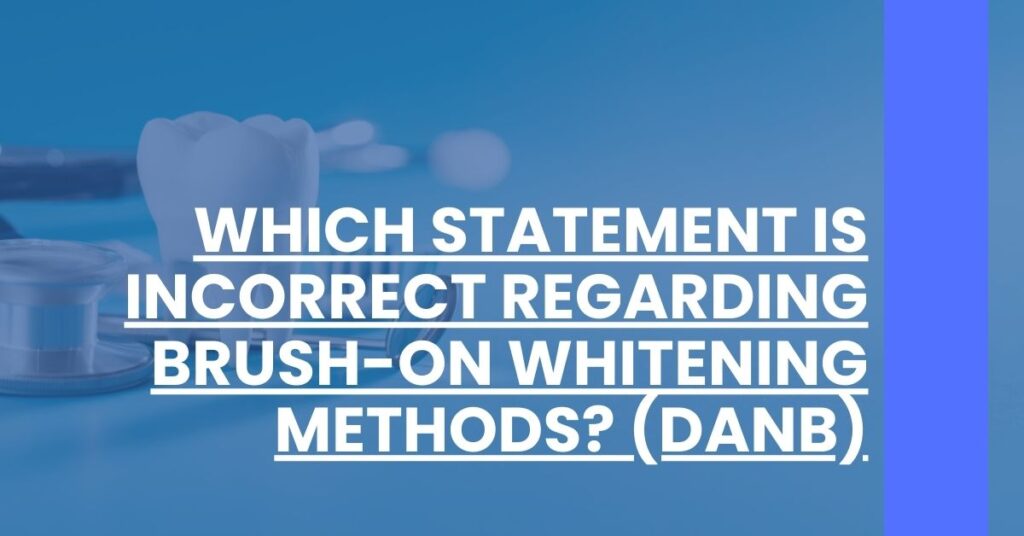The incorrect statement about brush-on whitening methods is that they provide sustainable long-term results without the need for additional treatments. Brush-on whitening is primarily for short-term whitening or touch-up purposes and is not a substitute for comprehensive dental bleaching procedures. While convenient, they often require continuous use to maintain their effect.
In this article, you will learn:
- The truth about brush-on whitening efficacy
- How to properly use these products
- Safety considerations
Get ready to flash your brightest smile with confidence as we hand you the facts!
Introduction
As you embark on your journey towards a brighter smile, brush-on whitening methods must have caught your eye. They promise convenient and speedy teeth whitening, but there’s a swirl of information out there that can leave you scratching your head in confusion. What’s fact, and what’s fiction when it comes to these on-the-go whiteners? If you’ve ever wondered which statement is incorrect regarding brush-on whitening methods, you’re not alone. In this comprehensive guide, we’ll dive deep into the depths of dental bleaching pens, debunk common myths, and ensure you have the knowledge to safely achieve the luminous smile you’re aiming for.
Understanding Brush-On Whitening Methods
At their core, brush-on whitening methods are all about convenience. They typically come in the form of pens or brushes that you can easily carry in a purse or pocket, allowing for on-the-spot applications. These whiteners often contain hydrogen peroxide or carbamide peroxide, which are the active ingredients you can thank for their bleaching power.
How They Work:
- The brush-on applicator releases the whitening agent onto your teeth.
- The peroxide-based gel begins to break down, releasing oxygen molecules.
- These molecules lift and dissolve the stains on the enamel.
Although the idea is simple, the effectiveness can vary greatly. Some factors that influence their performance include:
- The concentration of whitening agents.
- The duration of contact with the teeth.
- The types of stains you’re targeting.
For many, brush-on methods are a first foray into cosmetic dentistry’s promises of pearly whites. If you’re considering them, it’s crucial to go in with a clear understanding of what to expect.
Common Misconceptions About Brush-On Whitening
Misinformation runs rampant in the world of cosmetic dentistry, and brush-on whiteners are no exception. To safeguard your dental health and ensure you’re making informed decisions, let’s debunk some prevalent myths.
- Myth 1: Brush-on whitening methods are just as effective as professional treatments.
While these products can make a visible difference, they typically don’t offer results as dramatic or long-lasting as those achieved through professional services. - Myth 2: Natural whitening agents like lemon juice are a safe and effective alternative.
Contrary to popular belief, acidic home remedies can do more harm than good, eroding your tooth enamel over time and leading to increased sensitivity.
A keen eye for fact versus fiction will serve you well here. It’s essential to approach brush-on whitening with realistic expectations and a dose of healthy skepticism about some of the more grandiose claims.
The Truth Behind Brush-On Whitening Efficacy
Now that we’ve swept aside some falsehoods, you might be wondering just how effective these portable pens can be. When it comes to brush-on whitening methods, their primary appeal is their convenience and ease of use. But let’s be clear: the results often lean towards subtle rather than shocking.
Studies and expert opinions suggest that while you can certainly see a difference after using these products, the changes are typically mild and temporary. Most users experience a short-term brightening effect that can make touch-ups between more intense whitening sessions a breeze. However, if your goal is to combat deep-set stains or achieve a dramatically whiter shade, you may need to set your sights on more robust treatments.
Perception is almost as important as reality in the world of teeth whitening. So understanding what brush-on whitening can and cannot do will help you align your expectations with achievable outcomes, leading to a happier and more satisfying experience with your smile’s brightness.
Safety Concerns with Brush-On Whitening Products
When considering teeth whitening options, one of your primary concerns is likely safety. It’s vital for you to understand that not all products are created equal, and some carry risks that shouldn’t be overlooked. Brush-on whiteners, for example, can indeed be gentle warriors in the battle against dental discoloration, assuming they’re used correctly. Here’s what you should be aware of:
Gum Irritation: A common issue with teeth whitening products is that they can irritate your gums. This is usually mild and temporary, but always use the product as directed to minimize this risk. Ensure the bleaching agent touches only your teeth and wipe away any excess gel from your gums.
Tooth Sensitivity: Increased sensitivity is another frequent side effect—one that can be jarring if you’re not expecting it. To combat this, you might opt for a product with a lower peroxide concentration and give your teeth breaks between treatments.
Enamel Impact: While the whitening agent is working hard to brighten your smile, it could potentially weaken your tooth enamel if overused. It’s crucial to strike a balance and follow guidelines on frequency and duration of use.
Incompatibility with Dental Work: If you have crowns, veneers, or fillings, know that brush-on whitening products do not change the color of these materials, and overuse around these areas can lead to uneven whitening.
Remember, safety should never take a backseat in the pursuit of cosmetic improvements. For further reading on this, check out WebMD’s comprehensive safety guide on teeth whitening and bleaching here.
Proper Use of Brush-On Whitening for Optimal Results
It’s not just about picking the right product; how you use it makes a significant difference too. Let’s ensure you’re leveraging your brush-on whitening methods most effectively.
Timing is Crucial: Apply the whitening agent after you have thoroughly cleaned your teeth. This will allow maximum contact between the whitener and your enamel.
Uniform Application: Coat each tooth evenly to avoid a patchy appearance. Repeat the process as recommended, but do not overdo it—more isn’t always better.
No Eating or Drinking: After application, wait the instructed amount of time before consuming anything other than water, to allow the product to work.
Gradual Improvements: Don’t expect overnight miracles. Brush-on whiteners gradually improve the whiteness of your teeth, so patience is key.
When wielded properly, your whitening brush can be a powerful tool. But remember, optimal use also means adhering to safety guidelines. Check out GloScience’s blog here for tips to maximize your teeth whitening experience.
Comparing Brush-On Whitening to Professional Treatments
If you’re considering brush-on whitening methods, it’s only natural to wonder how they stack up against professional treatments. Let’s take a moment to compare:
Price: Brush-on options are significantly cheaper than the professional alternatives and are a good starting point if you’re new to teeth whitening.
Convenience: The ease of applying a brush-on whitener at home or on-the-go is unmatched by the need for dental appointments.
Intensity: While you might find brush-on methods have a gentler effect, professional treatments, which often use higher concentrations of peroxide, can achieve more dramatic results in a shorter time.
Ultimately, if you’re looking for a budget-friendly, manageable approach to teeth whitening, brush-on methods could be suitable for you. But, for those seeking a substantial change, professional treatments are the way to go. You can further explore this comparison between in-office and at-home teeth whitening here.
Myths Debunked and Your Questions Answered
Having an understanding of the nuances of brush-on whitening methods is essential for realistic expectations. To circle back to our initial inquiry, the statement “brush-on whitening methods provide sustainable long-term results without the need for additional treatments” falls short of accuracy, serving as an illustration of why it’s so crucial to question which statement is incorrect regarding brush-on whitening methods. These products are best for temporary results or maintaining already whitened teeth.
In response to your most pressing questions:
Can I use a brush-on whitener every day?
- While many products are safe for daily use, always follow the specific recommendations given with the product you choose.
How long does it take to see results from brush-on whiteners?
- Some products advertise results in a matter of days, whereas, with others, you might need to continue use for a few weeks to notice a difference.
Are there any alternative at-home whitening methods that provide long-term results?
- Over-the-counter trays and strips can potentially offer more significant and lasting results, but for truly enduring change, professional treatments remain supreme.
For further clarification on these questions and more about the effectiveness of brush-on whiteners, consider the insight available here.
Conclusion
Throughout this deep dive into the world of brush-on teeth whitening, a clear picture has emerged. These methods are wonderfully suited for quick fixes and minor improvements—in essence, they’re the dental equivalent of a cosmetic touch-up. But they are not a magic wand for long-term teeth whitening ambitions. By now, you should be adept at discerning which statement is incorrect regarding brush-on whitening methods, and equally important, why it’s incorrect.
Armed with this knowledge, you can make thoughtful choices about your oral care routine, embracing the role these products can play in maintaining a smile that matches your expectations. But remember: no whitening method replaces the tried-and-true benefits of regular brushing, flossing, and check-ups with your dental professional. Your smartest investment is always in the overall health of your teeth and gums; a naturally bright smile that follows is simply the dazzling bonus.

